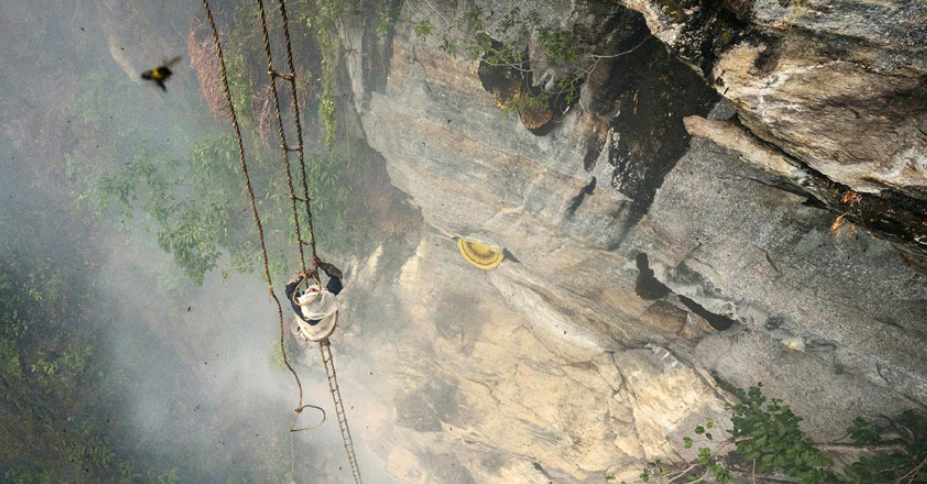
UNESCO World Heritage-listed Dolomites in northeastern Italy are a hiker and outdoor lover’s paradise and one of the world’s premier climbing areas. Those majestic mountains with their towering rock formations, sharp peaks, and miles of climbing routes draw climbers of all levels.
Finally, the Dolomites offer something for everyone, from novice climbers with their first taste of mountain climbing to professional alpinists looking for complex climbs. Whether you are looking to do a hut-to-hut hiking Dolomites or want to hone your climbing skills on some of the most iconic peaks in Europe, these mountains will inspire you and challenge you. In this article, we take a look at why the Dolomites suit rock climbers of any level and how you can get the best out of your climbing in the area.
1. Routes for Everyone, from Beginners to Experts.
The stunning variety of climbing routes found in the Dolomites is one of the main reasons they’ve become so popular with climbers. There are various routes for beginner to expert climbers.
Beginners: The Dolomites have many easier routes, even via ferrata (protected climbing routes) for beginner climbers to gain the rush of climbing vertical rock faces with fixed cables and ladders, as well as bridges and other security features. There are via ferrata routes all across the Dolomites, and they are perfect if you want to give climbing a whirl in a controlled, safe environment. These routes help climbers attain great heights without the need for advanced vertical skills.
Don’t worry if you’re an intermediate climber: There are many great rock climbs within reach that can be considered classics while still being challenging. This also includes trad climbing routes and multi-pitch routes up to stunning summits. Many of the easier alpine routes are on mountains like the Cinque Torri and Sasso Piatto. Most of these ascents require some amount of rock climbing, while some offer a considerable amount of scrambling to challenge intermediate climbers on varying types of terrain as well.
Expert Climbers: The Dolomites feature some of the most demanding climbs in Europe. Advanced alpinists have the option of conquering some of the most famous mountains in the region, including Marmolada, Tofane, and Civetta, leading both technical rock routes and glaciers. These ascents demand a great deal of skill and preparation, including familiarity with ice and mixed climbing and the ability to cope with high-altitude conditions. The diverse UFO in the Dolomites guarantees that climbers of every level discover a problem that is suitable for them, which makes the area a mecca for mountaineers.
2. Gorgeous Landscape, Quirky Geology
What makes the Dolomites different from other climbing destinations is not just the variety of routes but also the stunning beauty of the landscape. The area is famous for its dramatic, jagged peaks formed from a unique variety of limestone called dolomite rock. These mountains soar above the valleys below, forming a breathtaking backdrop for any ascent.
The stunning natural backdrop of the Dolomites enhances the climbing experience; climbers enjoy dramatic views of alpine meadows, glacial lakes, and verdant forests. Several routes provide panoramic views that sweep the entire range, and the play of light during the day produces spectacular visual effects on the rocky faces. For those people doing a hut-to-hut hiking trip in the Dolomites, these views become even more special as you make your way from hut to mountain hut, taking in the vastness of the range as you gain elevation. Most of the mountain range consists of dolomitic limestone rock, which is very good for climbing. The rock is largely of good quality, so sport and trad climbers can look for routes on most outcroppings. The good rock and beautiful scenery all combine to make climbing in the Dolomites a rewarding experience even for the most experienced climber.
3. Internationally Famous Via Ferrata Routes
The Dolomites are most notably known for the via ferrata routes traversing their peaks. These protected ways of climbing, which have been created, allow climbers to scale steep rock faces with the security of fixed cables, iron rungs, and ladders. Built originally during World War I for military use, via ferrata routes have become a popular alternative to get up and experience the Dolomites’ dramatic heights without needing technical climbing ability.
Via ferrata routes provide a good introduction to climbing for novice and intermediate climbers. The routes are meticulously curated and safe, which allows mountaineers to climb to the rugged sides of the mountain while remaining confident that they are well out of the element. Via Ferrata Brigata Tridentina on Tofana di Rozes is one of the most popular via ferrata routes in the Dolomites. This is a challenging but relatively accessible route for those with some climbing background. It’s not just a great climb, but it also gives spectacular views of the surrounding peaks and valleys. More experienced climbers can sample some of the region’s tougher via ferrata, including Via Ferrata delle Trincee on Monte Cristallo. Those routes are more exposed, more physically demanding, and require advanced climbing techniques. Hut-to-hut hiking is popular in the Dolomites; many mountain refuges are located at or near the beginning of via ferrata routes, enabling an enjoyable mix of hiking and climbing in this complete alpine destination.
4. Mountain huts or support infrastructure
Another reason the Dolomites are an ideal destination for climbers of all levels is their world-class climbing infrastructure. There is a well-developed network of mountain huts (rifugi) in the Dolomites to support climbers and hikers. Some of them are located along some of the more popular climbing routes and hut-to-hut hiking in the Dolomites trails, which makes them also a great base for climbers. It was these huts that provided not only shelter, but also hot meals and drinks, climbing gear rentals, and good prep for climbing as well. Many of the refuges also offer guided climbing tours, during which seasoned alpine guides can assist climbers as they tackle technical routes or provide support to first-timers.
This easy access to huts allows climbers to do longer, multi-pitch climbs without carrying all their gear or sleeping in tents in the mountains. After a long day of climbing, climbers can unwind at the hut, indulge in local cuisine, and map out their next adventure. 5. Local Knowledge and Climbing Culture There is a strong climbing tradition in the Dolomites and traditional mountain communities with a long history. Many of the region’s climbing guides hail from families with generations of alpine knowledge and are therefore invaluable resources for climbers looking to tackle the region’s more dizzying peaks. The climbing vibe in the Dolomites is one of open-hearted friendliness, similar to the climber community worldwide that gathers to embrace the mountain. Whatever your level of expertise, the local climbing culture is fantastic, and you are well looked after for your climbing experience to be safe, fun, and memorable.
Conclusion:
Climbing the Dolomites is a once-in-a-lifetime experience, with routes suitable to any skill level. With beginner-friendly via ferrata routes or challenging alpine climbs, there is something for everyone in the array of climbing options this region offers. The iconic scenery, rich climbing history, and infrastructure of mountain huts and experienced guides make the Dolomites an ideal choice for any climber. Whether you’re setting off on a hut-to-hut hike in the Dolomites or trying your hand at scaling some of the most famous peaks in Europe, the Dolomites make for a one-of-a-kind adventure in an Alpine setting.




